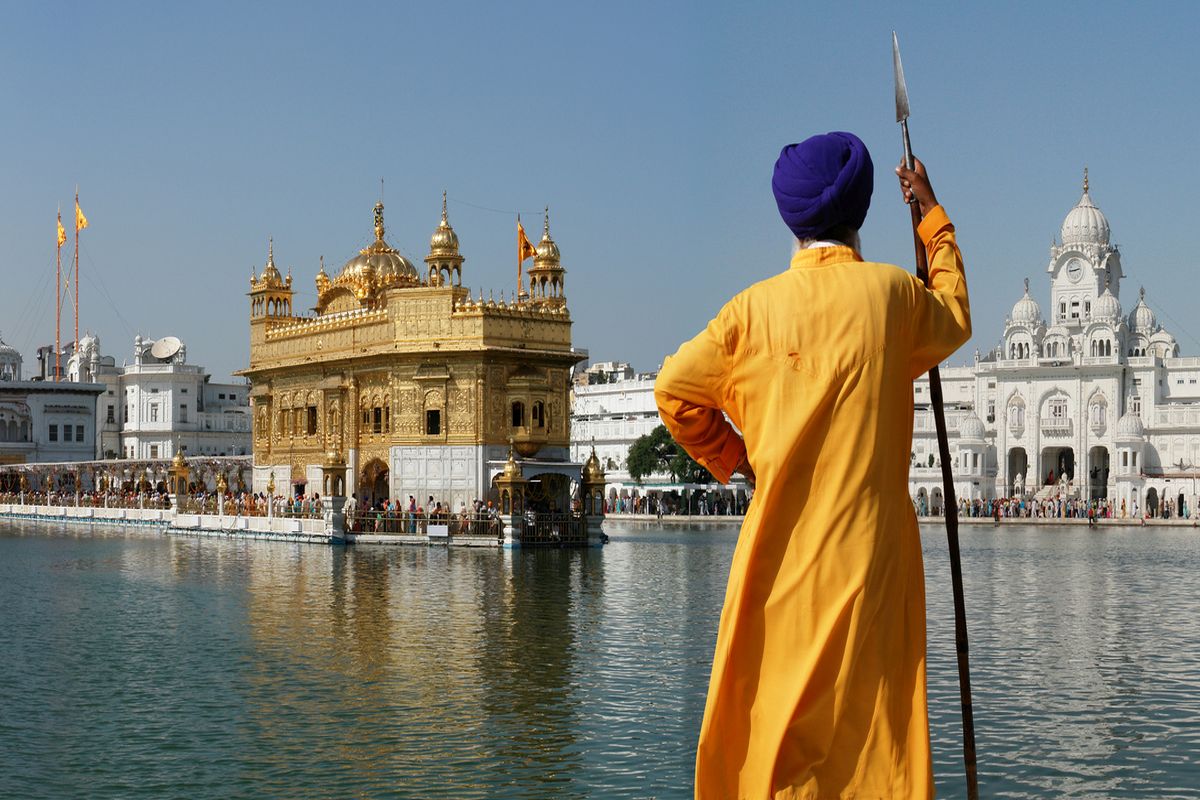President Murmu, PM Modi extend wishes on Guru Nanak Jayanti
The occasion is observed on the full moon date of Kartik month or commonly called Kartik Purnima every year.
Guru Nanak Dev was the first Guru and founder of Sikhism, a poet, a wandering religious teacher, a social reformer and a householder.

Representational image. (Photo: iStock)
“Good conduct is in itself the praise of God.” This is the teaching of the first Sikh master, Guru Nanak Dev, whose 550th Prakash Parv (birth anniversary) falls on November 12. “The Guru is God, ineffable, unsearchable. He who follows the Guru, comprehends the nature of the universe,” one of his quotes say. The three guiding principles of Guru Nanak Dev are: ‘Naam japana, kirat karna, vand chhakana’ which means to repeat God’s name, to be ready to engage in the labour of one’s hands and to be willing to share with others what one has gathered are said to be the three principles underlying Sikh ethics and way of life.
The 550th birth anniversary is being celebrated with great devotion since November 23, 2018, by the Punjab government.
Advertisement
The main function is being held at Sultanpur Lodhi town from November 1 to 12.
Advertisement
Various developmental works worth more than Rs. 3,200 crore have been initiated across the state by the government led by Chief Minister Amarinder Singh.
Special projects are being undertaken in 70 villages and towns visited by Guru Nanak Dev, a spokesperson for the government told IANS.
Guru Nanak Dev was the first Guru and founder of Sikhism, a poet, a wandering religious teacher, a social reformer and a householder.
The experience of one God, omniscient, omnipotent, omnipresent, and beyond all form and name, determined every thought and deed of Guru Nanak.
According to state’s government official website dedicated to the celebrations, the social doctrine denying caste which Guru Nanak preached must be seen in the light of his experience of a God before whom all men are equal.
His wanderings should be acknowledged as an attempt to engage in dialogue with others and to spread his belief in one God who teaches tolerance.
Guru Nanak’s later life as a householder should be perceived as his compliance of God’s command to all men to act responsibly within the world.
Finally, the ‘bani‘ Guru Nanak composed and the passing of his ‘Guruship‘ to his successor can only be understood as devotional acts meant to instill among his followers a continued dedication to the God.
Guru Nanak Dev is one of the most travelled persons of his times. He spent almost 20 years of his life in travelling.
The earliest accounts of Guru Nanak Dev’s travels are mentioned by Bhai Gurdas. ‘Janamsakhis’ also provide information relating to his travels.
The ‘Udasis’ (travels) of Guru Nanak Dev began from Sultanpur Lodhi following the bestowal of the divine commission upon him.
In his first long journey, Guru Nanak Dev travelled to Haryana, Delhi, Uttar Pradesh, Bihar, West Bengal, Odisha and Bangladesh.
In the second leg of his travel, he covered areas in the south up to Sri Lanka.
Some historians believe the east and south were covered in one ‘Udasi‘ over an extended period of 12 years.
This appears to be more reasonable as a person who is to visit south need not come back to Punjab to resume his journey for South India.
Some important places associated with Guru Nanak Dev’s visit in Sri Lanka are Batticaloa (Mattiakullam), Kurukul, Madap, Katargama, Nuwara Eliya, Avisvella (Sitawaka), Anuradhapura and Mannar.
The third tour or ‘Udasi‘ of Guru Nanak Dev was towards the interior of the Himalayan region where he visited the Kangra Valley, the Kulu Valley, Western Tibet, Ladakh, Kashmir and West Punjab (Pakistan).
After returning from the Himalayan tour, Guru Nanak Dev spent some time at Talwandi in Punjab and then decided to tour the countries of West Asia.
Wearing a dress of a Muslim devotee, he travelled to Sind, Baluchistan, Arabia, Iraq, Iran and Afghanistan.
According to Janamsakhi of Meharban and Bhai Mani Singh, he also travelled to Palestine, Syria and Turkey.
Some writers extend the range of Guru’s travels to other countries of Central Asia as well.
Some prominent places connected with this tour of Guru Nanak Dev are Multan, Uch, Lakhpat, Hinglaj, Mecca, Medina, Baghdad, Mashad, Herat, Kandhar, Kabul, Parachinnar and Gorakhhatri (Peshawar).
With the completion of his western tour, Guru Nanak Dev finally settled down at Kartarpur Sahib (now in Pakistan).
From Kartarpur, Guru Nanak Dev occasionally undertook short tours within Punjab.
One of them, according to Bhai Gurdas, was to Achal Batala and another to Multan.
According to a post on the government website, the word ‘Gurdwara‘, which stands as the amalgamation of the words ‘Guru’ and ‘Dwara’, has its literal meaning the ‘Gateway to Guru’.
All gurdwaras worship the holy book of Sikhs, Guru Granth Sahib Ji, which is placed at the high pedestal of worship.
Out of the many famous gurdwaras throughout the world, Gurdwara Janam Asthan, also referred to as Gurdwara Nankana Sahib, is a highly revered shrine that was built at the site where the Guru Nanak Dev was believed to be born.
The shrine is located in the city of Nankana Sahib, near the city of Lahore in Pakistan’s Punjab province.
Another highly revered shrine in Pakistan is Gurdwara Sri Darbar Sahib, also called Kartarpur Sahib.
It is situated at Kartarpur in Narowal district of Punjab province.
It is built on the historic site where Guru Nanak Dev settled after his ‘Udasian‘ (missionary travels) and lived for 18 years until his death in 1539. The shrine is located along the Ravi river.
A corridor which will give round-the-year access to Indian pilgrims to the Kartarpur gurdwara was inaugurated on Saturday.
Advertisement